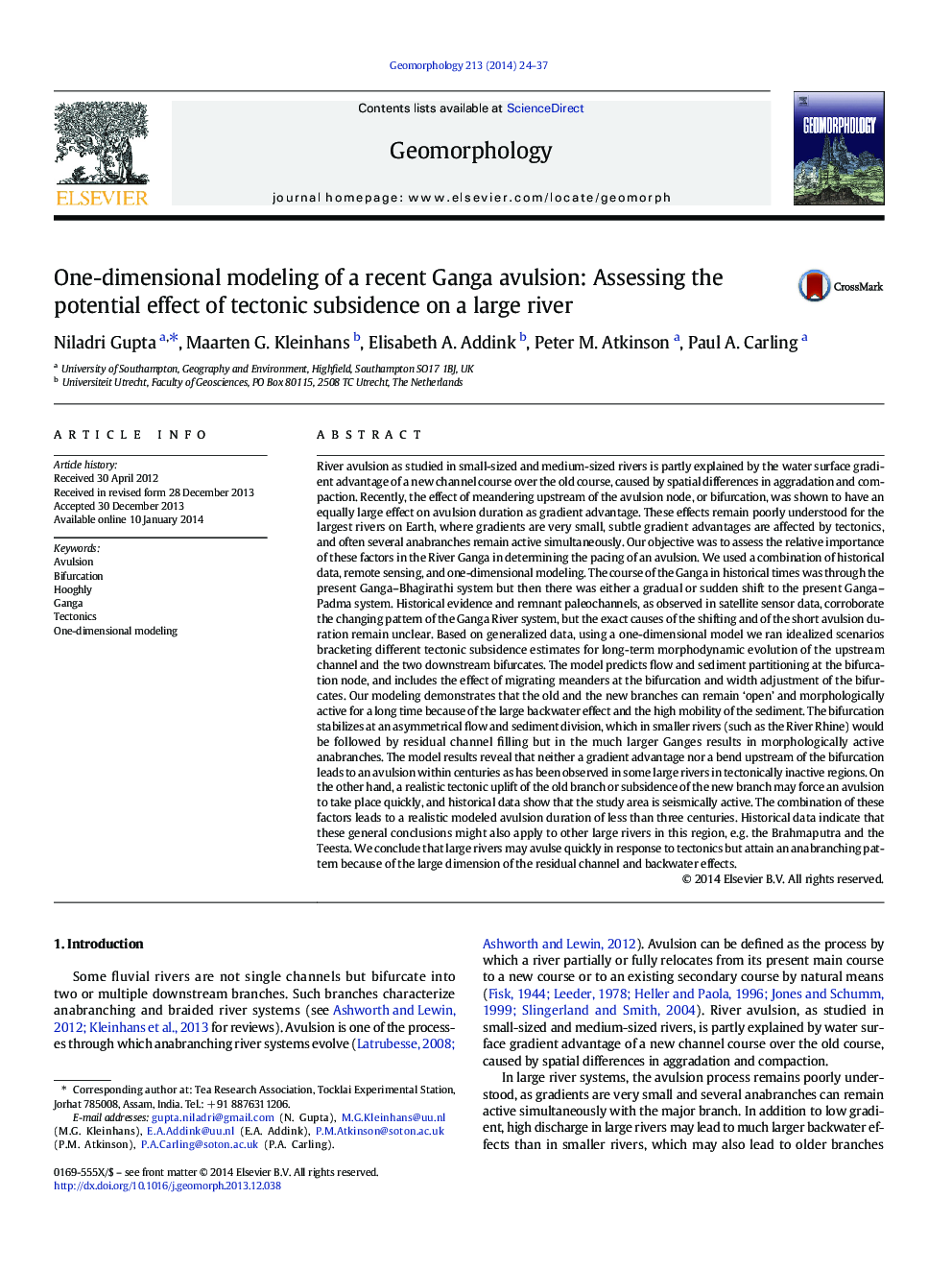| کد مقاله | کد نشریه | سال انتشار | مقاله انگلیسی | نسخه تمام متن |
|---|---|---|---|---|
| 6432486 | 1635436 | 2014 | 14 صفحه PDF | دانلود رایگان |

- Tectonics and meandering effect in the avulsion of the Ganga system are modeled.
- Gradient advantage and bend upstream of bifurcation does not result in avulsion.
- Tectonic subsidence results in a historically consistent modeled avulsion period.
- Backwater effect and high sediment mobility keep both bifurcated channels active.
- The backwater effect sustains the anabranch planform of some world's large rivers.
River avulsion as studied in small-sized and medium-sized rivers is partly explained by the water surface gradient advantage of a new channel course over the old course, caused by spatial differences in aggradation and compaction. Recently, the effect of meandering upstream of the avulsion node, or bifurcation, was shown to have an equally large effect on avulsion duration as gradient advantage. These effects remain poorly understood for the largest rivers on Earth, where gradients are very small, subtle gradient advantages are affected by tectonics, and often several anabranches remain active simultaneously. Our objective was to assess the relative importance of these factors in the River Ganga in determining the pacing of an avulsion. We used a combination of historical data, remote sensing, and one-dimensional modeling. The course of the Ganga in historical times was through the present Ganga-Bhagirathi system but then there was either a gradual or sudden shift to the present Ganga-Padma system. Historical evidence and remnant paleochannels, as observed in satellite sensor data, corroborate the changing pattern of the Ganga River system, but the exact causes of the shifting and of the short avulsion duration remain unclear. Based on generalized data, using a one-dimensional model we ran idealized scenarios bracketing different tectonic subsidence estimates for long-term morphodynamic evolution of the upstream channel and the two downstream bifurcates. The model predicts flow and sediment partitioning at the bifurcation node, and includes the effect of migrating meanders at the bifurcation and width adjustment of the bifurcates. Our modeling demonstrates that the old and the new branches can remain 'open' and morphologically active for a long time because of the large backwater effect and the high mobility of the sediment. The bifurcation stabilizes at an asymmetrical flow and sediment division, which in smaller rivers (such as the River Rhine) would be followed by residual channel filling but in the much larger Ganges results in morphologically active anabranches. The model results reveal that neither a gradient advantage nor a bend upstream of the bifurcation leads to an avulsion within centuries as has been observed in some large rivers in tectonically inactive regions. On the other hand, a realistic tectonic uplift of the old branch or subsidence of the new branch may force an avulsion to take place quickly, and historical data show that the study area is seismically active. The combination of these factors leads to a realistic modeled avulsion duration of less than three centuries. Historical data indicate that these general conclusions might also apply to other large rivers in this region, e.g. the Brahmaputra and the Teesta. We conclude that large rivers may avulse quickly in response to tectonics but attain an anabranching pattern because of the large dimension of the residual channel and backwater effects.
Journal: Geomorphology - Volume 213, 15 May 2014, Pages 24-37